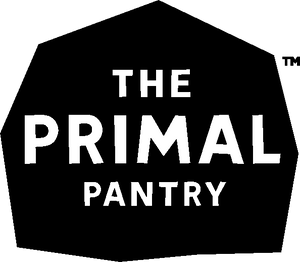Tofu burgers, cauliflower steaks, facon (that’s fake bacon in case you were wondering), scroll through any foodie Insta feed and you’ll soon notice the increasing trend for alternative protein sources.
From beef to beans, with 9 billion mouths to feed on the planet, the way we consume protein on a global scale is a curious health topic.
It’s one that’s certainly got us wondering about where everyone is getting their protein. Because come on, how many times have you been asked that as someone who tracks their macros or smashes reps in the gym? Even low-key yogis and those of us who just enjoy a Sunday stroll need the right balance to keep our bodies and minds in sync.
Mother Nature will thank us for looking at alternative protein sources too. Since we don’t actually have the land, water or carbon budget to sustain everyone eating meat.
THE FIVE PROTEIN PILLARS
Whether you’re nibbling on shroomdogs (mushroom hotdogs – surprisingly meaty) or enjoying a vegan roast, protein choices can usually be classed under 5 categories:
- Livestock (meat, dairy and eggs)
- Fish and seafood
- Plant-based (nuts, seeds, pulses)
- Meat substitutes (soya, tofu)
- Future foods (insect and algal protein, lab-grown meats)
Protein choices aren’t even just about our daily fitness goals; they’re deep-rooted in our cultural and social beliefs and habits. So where you grew up and how you were raised might have an impact on your sandwich filling or evening meal.
Let’s take a look at exactly what the global protein consumption looks like.
GLOBAL PROTEIN TRENDS
We could demonstrate this with a nice pie chart, but the crust might be too many carbs. So we’ll keep it lean with a nice, concise list. Our lifestyles and cultures are so varied, as are our protein sources. Just check out this list:
China/Taiwan – Soybeans and soy foods
From ancient times to well into the 20th century, China was by far the world’s leading producer of soybeans. The soybean was Manchuria’s most important agricultural and export crop and during the 1920s, large amounts of soybeans, soy oil and soybean meals were shipped from Manchurian ports to countries around the world.
In 2014, China was consuming 14 million tons of soybeans. Typical soy products include Douchi (used to make black bean sauce) and Jajangmyeon (wheat noodles topped with a thick sauce, diced with pork, vegetables and sometimes seafood.
Japan – Sushi, beef, seaweed, soy products
Japanese people are also likely to get their protein sources from soya. A few popular Japanese soy products include Miso – a Japanese seasoning produced by fermenting rice, barley and soybeans to create a thick paste used for sauces and soups.
Sushi is of course, the go-to protein source in Japan though, with an extensive range of products on offer. Traditional sushi is much more likely to include sashimi rather than rolls and the freshest of fish is often sourced from the Tsukiji Market and then served with a dash of wasabi.
Ethiopia – Teff
We all know about quinoa, but Ethiopia’s teff is poised to be the next big super grain. Not only is it rich in protein, but also in calcium and iron too with added amino acids. The grain can substitute for wheat flour in anything from bread and pasta to waffles and pizza bases.
In Ethiopia, it’s grown by over 6 million farmers and makes up more than 20% of all crop space in the fields. It’s ground into flour and used to create injera, a spongy fermented flatbread, which is used in many religious and cultural ceremonies.
Indonesia – Tempeh
Made from fermented soybeans; the traditional Indonesian food tempeh has a hearty texture and is a complete protein. Eating tempeh is not only a great way to add healthy soy to your diet, but it also boosts intake of fermented foods and ensures a healthy protein intake.
During the fermentation process, tempeh produces enzymes that make it easier for the body to process protein, fat and carbohydrates. So the food is ideal for kids, the elderly and also great for fitness fiends wanting to shed a few pounds. Its benefits are endless – from helping prevent degenerative illnesses to lowering cholesterol, hypertension and even slowing the ageing process.
Ghana/South Africa/Latin America – Future foods
Bugs (termites) are a popular protein choice in Ghana where they’re fried, roasted or made into bread and insects are eaten with cornmeal porridge. In Latin America, fire- roasted tarantulas and ants are prevalent in traditional dishes.
Canada – Hemp
Hemp seeds and hemp protein powder is a powerful plant-protein popular in Canada. The seeds, also known as hemp hearts, have a nutty taste, similar to sunflower seeds and pine nuts. They’re gluten-free and contain more protein and omegas and less carbohydrates than the same serving of chia seeds or flax seeds. Canadians top their salads and yoghurt with them, yum!
Sweden – Dairy
Swedes have diets rich in dairy and consume it regularly as a form of healthy protein. Quark is one of them. It’s a fresh dairy product that has a similar texture to sour cream with a mild tangy taste. Swedish people often look for protein-rich snacks to fuel their day and quark is excellent as it’s low in fat and sugar.
These days, more pressure, stress and expectations on people daily means we’re pushed for time and less likely to make smart, informed food choices.
One way we can keep on top of our energy requirements is with on-the-go protein, the kind you’ll find in our plant protein bars. Made from dates, hemp protein, coconut nectar and almonds, they’re packed with essential plant-based proteins for enhanced performance and alertness. Plus in a range of tempting flavours from espresso to orange, they taste pretty sweet too.
Photo by CHUTTERSNAP on Unsplash

